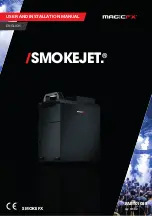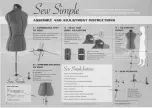
5
- EN
coins, pens and paper clips, and turn pockets
inside out and brush. Such objects may
damage the product or cause noise problem.
• Put small size clothes such as infant's socks
and nylon stockings in a laundry bag or pillow
case.
• Place curtains in without compressing them.
Remove curtain attachment items.
• Fasten zippers, sew loose buttons and mend
rips and tears.
• Wash “machine washable” or “hand washable”
labeled products only with an appropriate
programme.
• Do not wash colours and whites together. New,
dark coloured cottons release a lot of dye.
Wash them separately.
• Tough stains must be treated properly before
washing. If unsure, check with a dry cleaner.
• Use only dyes/colour changers and limescale
removers suitable for machine wash. Always
follow the instructions on the package.
• Wash trousers and delicate laundry turned
inside out.
• Keep laundry items made of Angora wool in the
freezer for a few hours before washing. This will
reduce pilling.
• Laundry that are subjected to materials such as
flour, lime dust, milk powder, etc. intensely must
be shaken off before placing into the machine.
Such dusts and powders on the laundry may
build up on the inner parts of the machine in
time and can cause damage.
Correct load capacity
The maximum load capacity depends on the type
of laundry, the degree of soiling and the washing
programme desired.
The machine automatically adjusts the amount
of water according to the weight of the loaded
laundry.
A
Follow the information in the “Programme
and consumption table”. When overloaded,
machine's washing performance will drop.
Moreover, noise and vibration problems may
occur.
Laundry types and their average weights in the
following table are given as examples.
Laundry type
Weight (g)
Bathrobe
1200
Duvet cover
700
Bed Sheet
500
Pillowcase
200
Tablecloth
250
Towel
200
Men’s shirt
200
Loading the laundry
Open the loading door. Place laundry items loosely
into the machine. Push the loading door to close
until you hear a locking sound. Ensure that no items
are caught in the door.
C
The loading door is locked while a programme
is running. The door can only be opened a
while after the programme comes to an end.
A
In case of misplacing the laundry, noise and
vibration problems may occur in the machine.
Using detergent and softener
Detergent Drawer
The detergent drawer is composed of three
compartments:
- (1) for prewash
- (2) for main wash
– (3) for softener
– (*) in addition, there is siphon piece in the softener
compartment.
1
2
3
1
2
3
Detergent, softener and other cleaning agents
• Add detergent and softener before starting the
washing programme.
• Never open the detergent drawer while the
washing programme is running!
• When using a programme without prewash,
do not put any detergent into the prewash
compartment (compartment nr. I).
• In a programme with prewash, do not put
liquid detergent into the prewash compartment
(compartment nr. I).
• Do not select a programme with prewash if you
are using a detergent bag or dispensing ball.
Place the detergent bag or the dispensing ball
directly among the laundry in the machine.
• If you are using liquid detergent, do not forget
to place the liquid detergent cup into the main
wash compartment (compartment nr. II).
Choosing the detergent type
The type of detergent to be used depends on the
type and colour of the fabric.
• Use different detergents for coloured and white
laundry.
• Wash your delicate clothes only with special
detergents (liquid detergent, wool shampoo,
etc.) used solely for delicate clothes.
• When washing dark coloured clothes and
quilts, it is recommended to use liquid
detergent.
• Wash woolens with special detergent made
specifically for woolens.
A
Use only detergents manufactured specifically
for automatic washing machines.
A
Do not use soap powder.
Adjusting detergent amount
The amount of washing detergent to be used
depends on the amount of laundry, the degree
of soiling and water hardness. Read the
manufacturer's instructions on the detergent
package carefully and follow the dosage values.
• Do not use amounts exceeding the dosage
quantities recommended on the detergent
package to avoid problems of excessive
Summary of Contents for EV5100
Page 13: ...13 BG ...
Page 25: ...25 LT ...
Page 37: ...37 PT ...
Page 49: ...49 RU ...
Page 61: ...61 IT ...






































